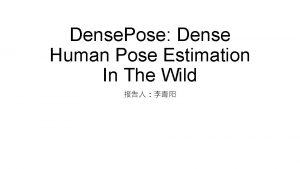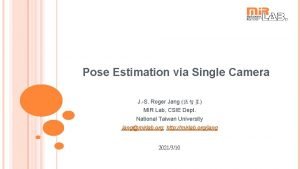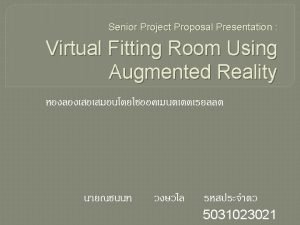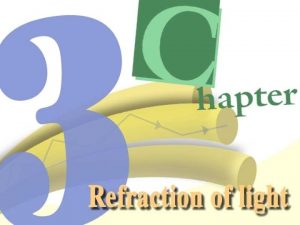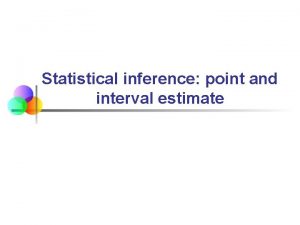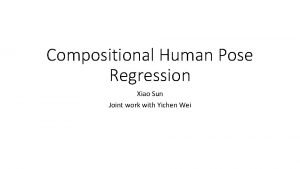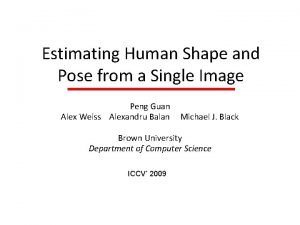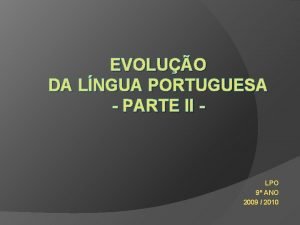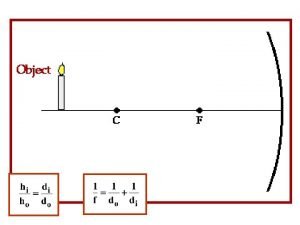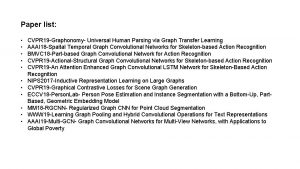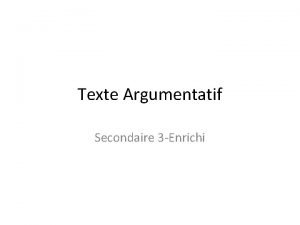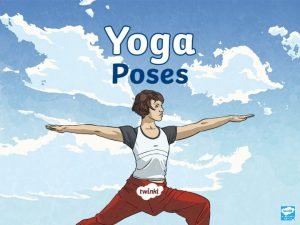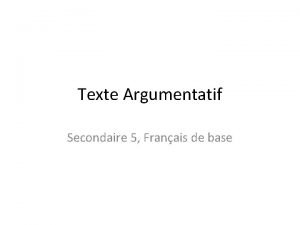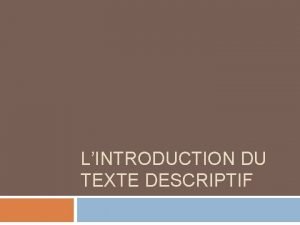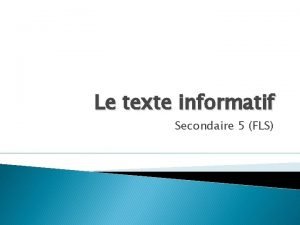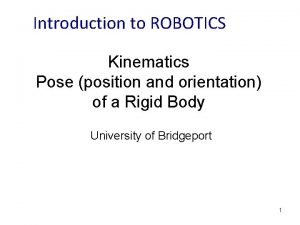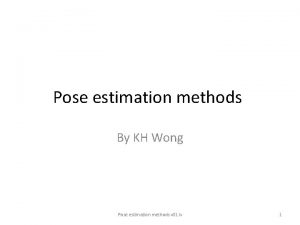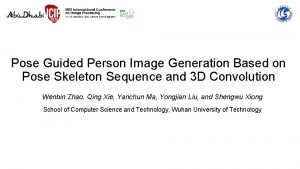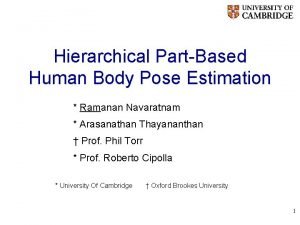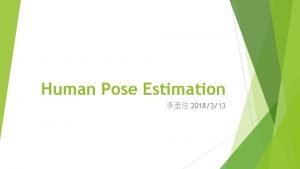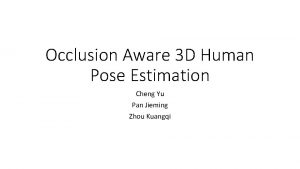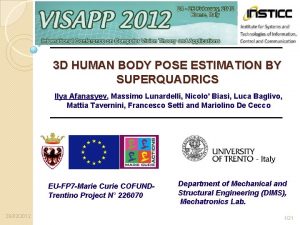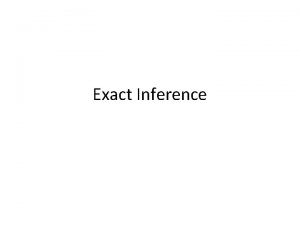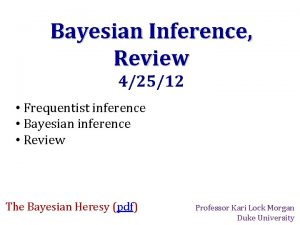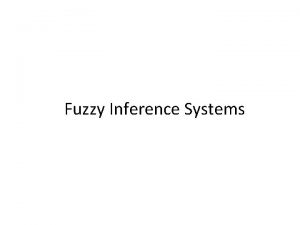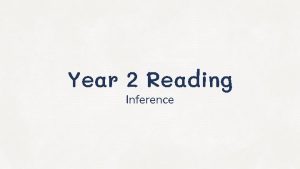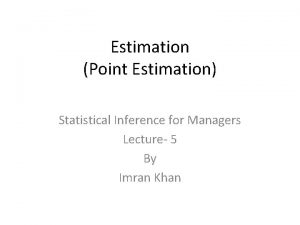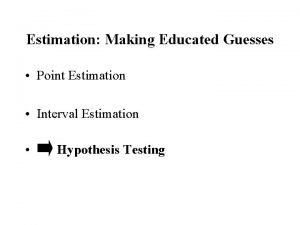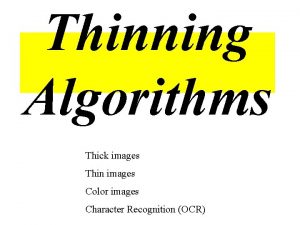Human Pose Estimation from Depth Images via Inference


























- Slides: 26

Human Pose Estimation from Depth Images via Inference Embedded Multi-task Learning Keze Wang kezewang@gmail. com Sun Yat-sen University 2016 -10 -19

Outline • Background • Motivation • Framework • Results • Conclusion

Outline • Background • Motivation • Framework • Results • Conclusion

Background Objective: Estimate human pose from a still depth image.

Challenging Issues Unusual poses/views: • Current solvers often fail in handling exceptional and unusual cases. This is due to the bias of training data and errors introduced by sensor noise.

Challenging Issues Self-occlusions: • The depth data captured from one single sensor inevitably contains body part occlusions, especially in playing complex gestures.

Outline • Background • Motivation • Framework • Results • Conclusion

Motivation Ø To handle unusual pose/views and self-occlusions, • Explicitly represent the human pose in a coarse-to-fine manner • Constrain the human pose under 3 D kinematic tree structure. Ø To achieve towards real-time performance • Incorporates the dynamic programming inference into the deep neural network architecture.

Outline • Background • Motivation • Framework • Results • Conclusion

Framework: two cascaded tasks Ø First Task: generating human part proposals Ø Second Task: optimal configuration inference

Body Part Proposal Generation Our model generates body part proposals by design a fully convolutional network (FCN), which produces a dense heat map output for each body part. Generate body part proposal

Optimal Configuration Inference We propose to model the human pose by the sum of unary and pairwise terms according to the 3 D kinematic tree structure: Appearance Compatibility Contextual Geometry Relationship

Tailored Match. Net Part Templates: Offline Clustered via the ground truth

Inference Built-in Match. Net Fast Inference via dynamic programming Head Neck … L-Shoulder R-Shoulder

Multi-task Learning Ø We employ the widely used batch Ø We employ a latent learning Stochastic Gradient Descent (SGD) algorithm extended from the algorithm to train FCN and tailored CCCP framework. Match. Net, respectively.

Multi-task Learning

Outline • Background • Motivation • Framework • Results • Conclusion

Dataset Description Ø Kinect 2 Human Gesture Dataset (K 2 HGD): 100 K depth images with various human poses under challenging scenarios. • 19 body joints • 30 subjects • 10 challenging scenes. Ø Evaluation Metric: Percent of Detected Joints (PDJ)

Experimental Comparisons Ø Quantitative Comparison with state-of-the-art approaches Ø Efficiency Comparison on intel 3. 4 GHz CPU + NVIDIA TITAN X GPU

Experimental Comparisons Ø Qualitative Comparison with state-of-the-art approaches

Visual Comparison with commercial products

Experimental Comparisons Ø Component Analysis

Outline • Background • Motivation • Framework • Results • Conclusion

Conclusions Ø We proposed a novel deep inference-embedded multi-task learning framework for predicting human pose from depth data. • Detecting a batch of body part proposals via a fully convolutional network (FCN); • Searching for the optimal configuration of body parts based on the body part proposals via a fast inference step (i. e. , dynamic programming) Ø We developed a inference built-in Match. Net to incorporate the single term of appearance cost and the pairwise 3 D kinematic constraint.

Any Questions?

Thank You!
 Dense pose estimation
Dense pose estimation Pose estimation
Pose estimation Huei-yung lin
Huei-yung lin Total internal reflection in a semicircular glass block
Total internal reflection in a semicircular glass block Inference point
Inference point Compositional human pose regression
Compositional human pose regression Pose
Pose Decimoquinta estacion via crucis
Decimoquinta estacion via crucis La via negativa
La via negativa 7 estaciones del via lucis
7 estaciones del via lucis Rodete piramidal
Rodete piramidal Palavras convergentes
Palavras convergentes Virtual and real images
Virtual and real images Real image concave mirror
Real image concave mirror Https://tw.images.search.yahoo.com/images/view
Https://tw.images.search.yahoo.com/images/view How to save images on google images
How to save images on google images Https://tw.images.search.yahoo.com/images/view
Https://tw.images.search.yahoo.com/images/view Graphonomy
Graphonomy Organisateurs textuels
Organisateurs textuels Mountain pose benefits
Mountain pose benefits Sujet posé exemple
Sujet posé exemple Pose purposeful questions
Pose purposeful questions Longue comme dix hommes un homme seul peut me porter
Longue comme dix hommes un homme seul peut me porter Sa1 pose
Sa1 pose Texte argumentatif exemple
Texte argumentatif exemple Texte français
Texte français Position vector definition
Position vector definition
